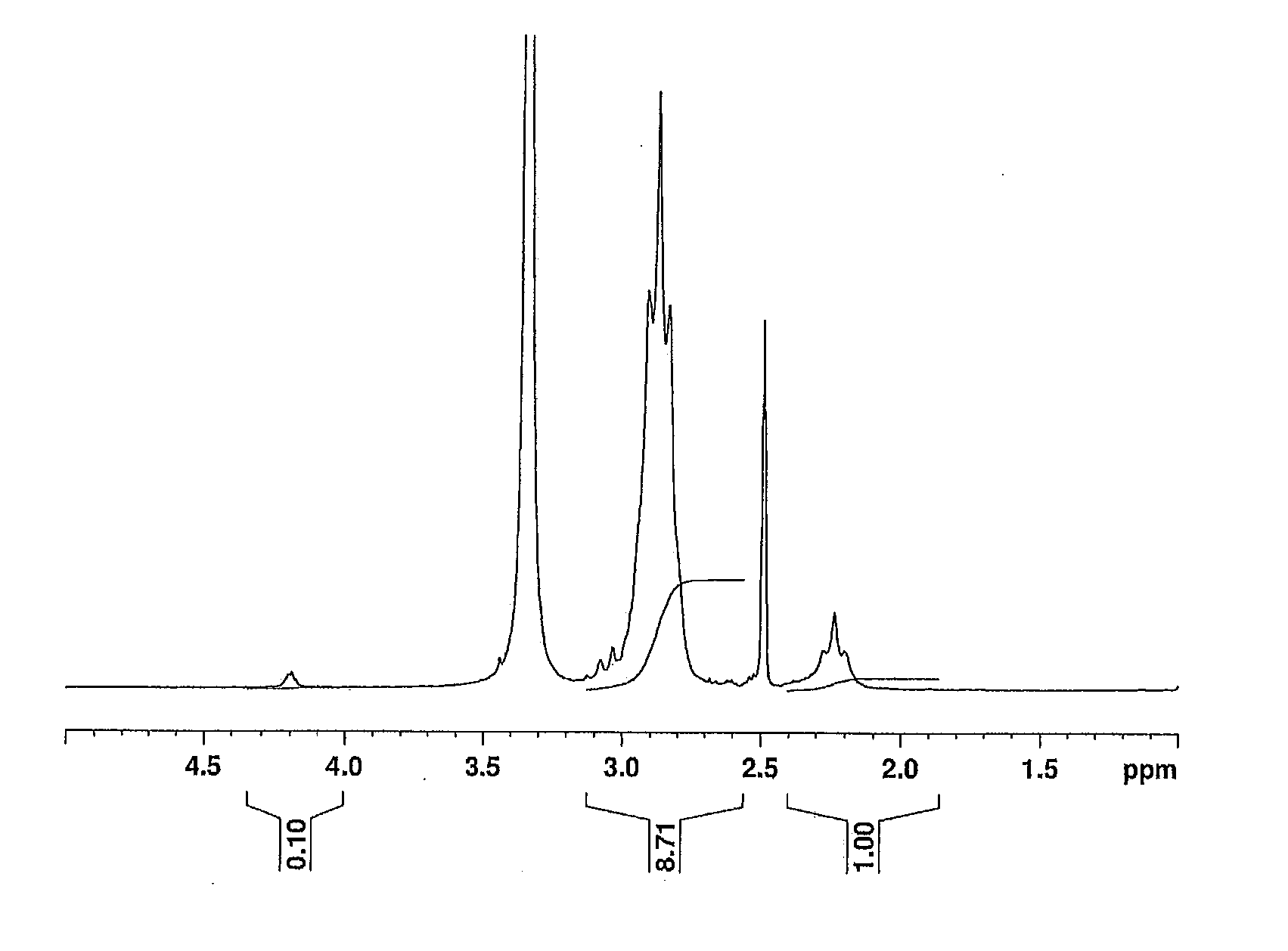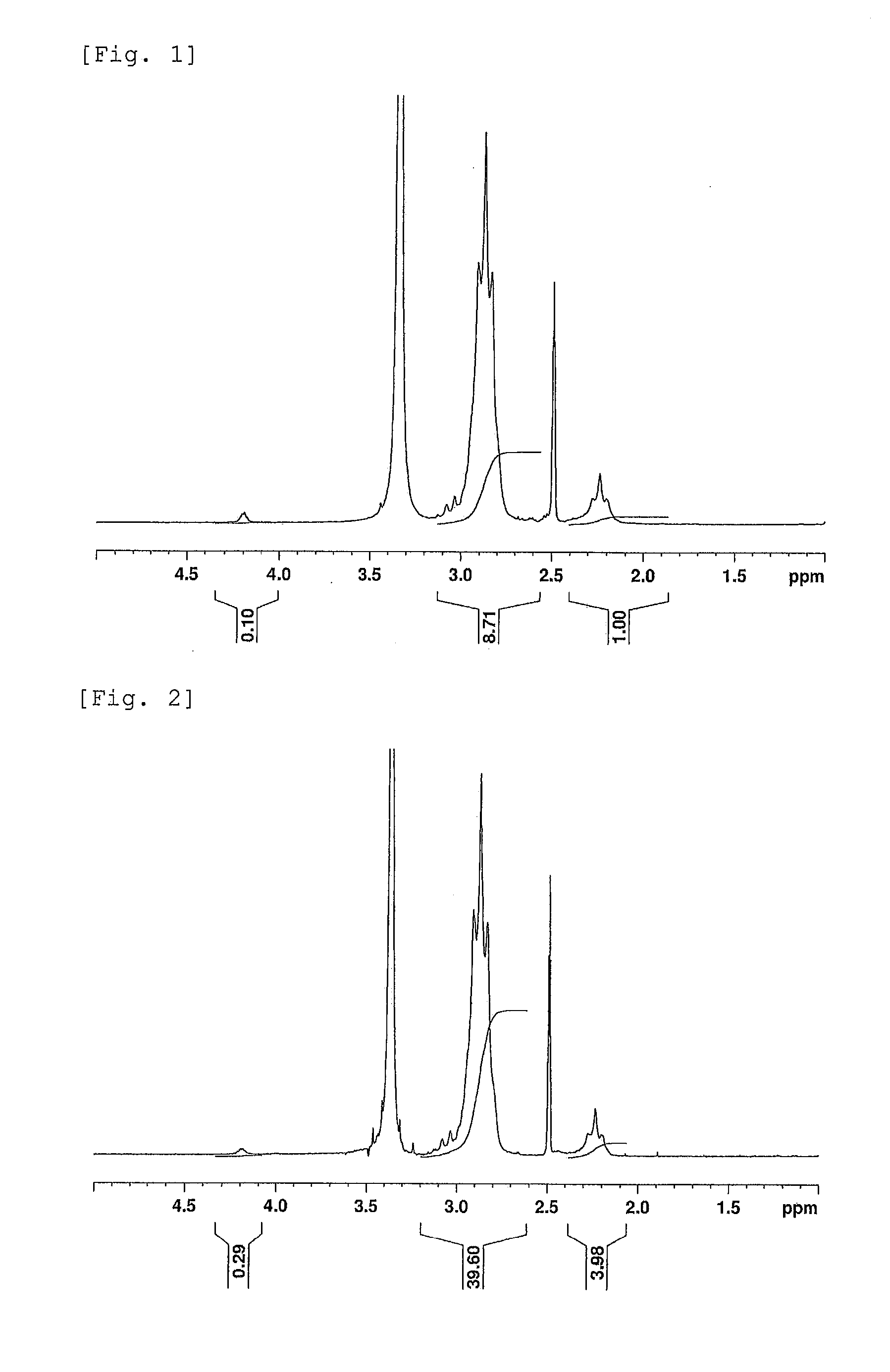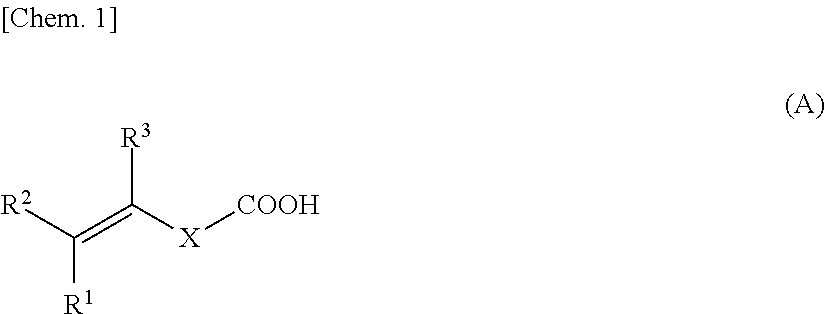Vinylidene Fluoride Copolymers and Uses of the Copolymers
- Summary
- Abstract
- Description
- Claims
- Application Information
AI Technical Summary
Benefits of technology
Problems solved by technology
Method used
Image
Examples
example 1
[0124]Polymerization was performed in the following manner to produce a vinylidene fluoride copolymer as a polymer powder.
[0125]A 2 L autoclave was charged with 900 g of ion exchanged water, 0.4 g of METOLOSE 90SH-100 (manufactured by Shin-Etsu Chemical Co., Ltd.) as a cellulose-based suspending agent, 0.2 g of carboxyethyl acrylate, 2.0 g of a 50 wt % t-butyl peroxypivalate / CFC 225cb solution, and 396 g of vinylidene fluoride. The temperature was raised to 50° C. in 2 hours.
[0126]While maintaining the temperature at 50° C., a 15 g / L aqueous solution of carboxyethyl acrylate was gradually added at such a rate that the polymerization pressure became constant. The total amount of carboxyethyl acrylate including the initial charge was 4.0 g.
[0127]The polymerization was terminated simultaneously with the completion of the addition of the aqueous carboxyethyl acrylate solution. The total polymerization time from the initiation of heating was 8.6 hours.
[0128]After the completion of the po...
examples 2 and 3
[0145]Polymer powders were obtained in the same manner as in Example 1, except that the concentration and amount of the aqueous carboxyethyl acrylate solution, the amount of the initiator, and the polymerization conditions were changed as described in Table 1. The polymer yields were 71% in Example 2 and 25% in Example 3. The inherent viscosities of the polymers were 3.15 dl / g in Example 2 and 2.65 dl / g in Example 3. The absorbance ratios (AR) of the polymers were 0.70 in Example 2 and 2.57 in Example 3.
[0146]1H NMR spectra and 19F NMR spectra of the polymer powders were recorded in the same manner as in Example 1. The VDF contents and the CEA contents in the polymers were obtained from the integral intensities in the 1H NMR spectra similarly to Example 1. Further, the contents of polymer chains derived from carboxyethyl acrylate were obtained from the 19F NMR spectra similarly to Example 1, and the randomness were calculated based on the CEA contents and the contents of polymer cha...
examples 4 and 5
[0148]Polymer powders were obtained in the same manner as in Example 1, except that carboxyethyl acrylate was replaced by acryloyloxyethyl succinate as well as that the concentration and amount of the aqueous acryloyloxyethyl succinate solution, the amount of the initiator, and the polymerization conditions described in Table 1 were adopted. The polymer yields were 70% in Example 4 and 37% in Example 5. The inherent viscosities of the polymers were 2.83 dl / g in Example 4 and 3.16 dl / g in Example 5. The absorbance ratios (AR) of the polymers were 0.72 in Example 4 and 1.49 in Example 5.
[0149]1H NMR spectra of the polymer powders were recorded in the same manner as in Example 1. The obtained 1H NMR spectrum of the polymer powder from Example 4 is illustrated in FIG. 2.
[0150]The 1H NMR spectrum was analyzed to determine the contents of structural units derived from vinylidene fluoride and of structural units derived from acryloyloxyethyl succinate in the polymer, based on the integral ...
PUM
| Property | Measurement | Unit |
|---|---|---|
| Fraction | aaaaa | aaaaa |
| Specific volume | aaaaa | aaaaa |
| Fraction | aaaaa | aaaaa |
Abstract
Description
Claims
Application Information
 Login to View More
Login to View More - R&D
- Intellectual Property
- Life Sciences
- Materials
- Tech Scout
- Unparalleled Data Quality
- Higher Quality Content
- 60% Fewer Hallucinations
Browse by: Latest US Patents, China's latest patents, Technical Efficacy Thesaurus, Application Domain, Technology Topic, Popular Technical Reports.
© 2025 PatSnap. All rights reserved.Legal|Privacy policy|Modern Slavery Act Transparency Statement|Sitemap|About US| Contact US: help@patsnap.com



